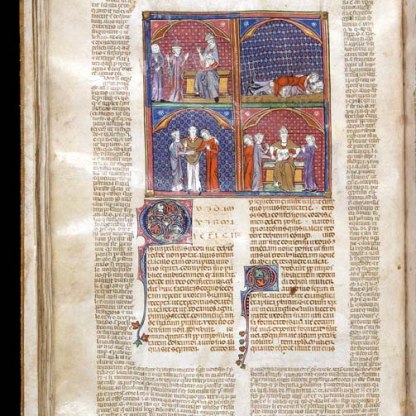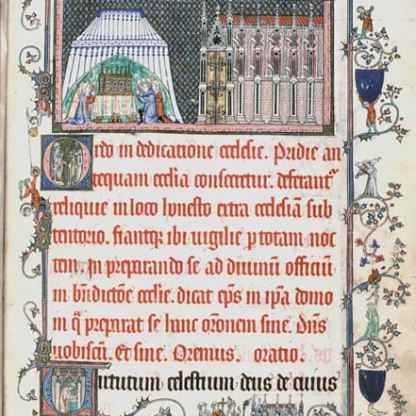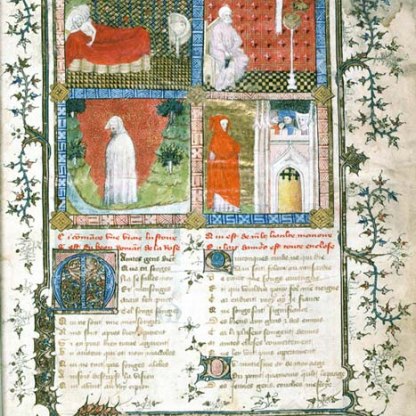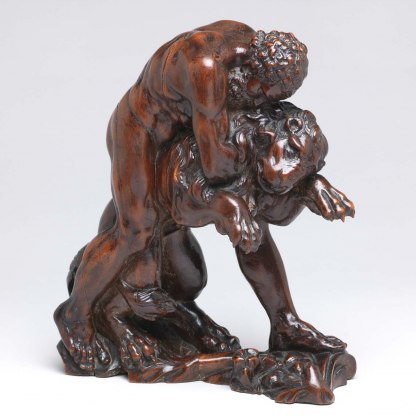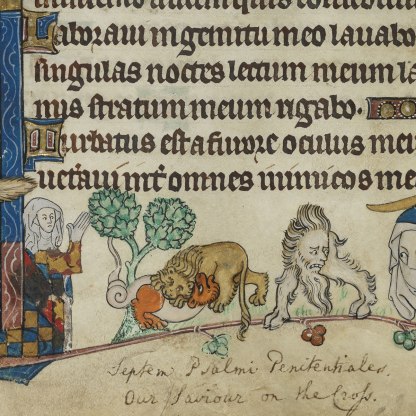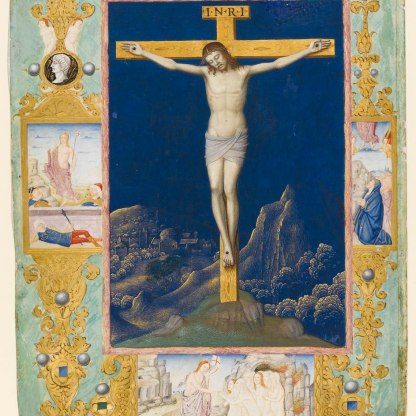Family Trees
In addition to the narrative scenes illustrating the Fall of Man and the various cases that Gratian discusses, there are two further large illustrations in this manuscript worthy of comment. The front and reverse of folio 71 show two ‘tables’ known as the Tree of Consanguinity and the Tree of Affinity. These Trees often accompanied texts that dealt with the rules of marriage, though they are not usually found in manuscripts of Gratian’s Decretum in this period. Their appearance here, unaccompanied by any text, is exceptional.
The Trees of Consanguinity and Affinity indicate the degrees of relationship between a person and his or her relatives, by blood or by marriage, and define the eligibility of potential marriage partners.
The Tree of Consanguinity [folio 71r], is an arrow-shaped table held up by a king, identified as Adam, from whom all men were ultimately descended. He stares directly out at the viewer, holding a palm branch in each hand. His feet rest upon recumbent lions. Within the circles in the arrow are named the blood relatives with whom marriage is forbidden.
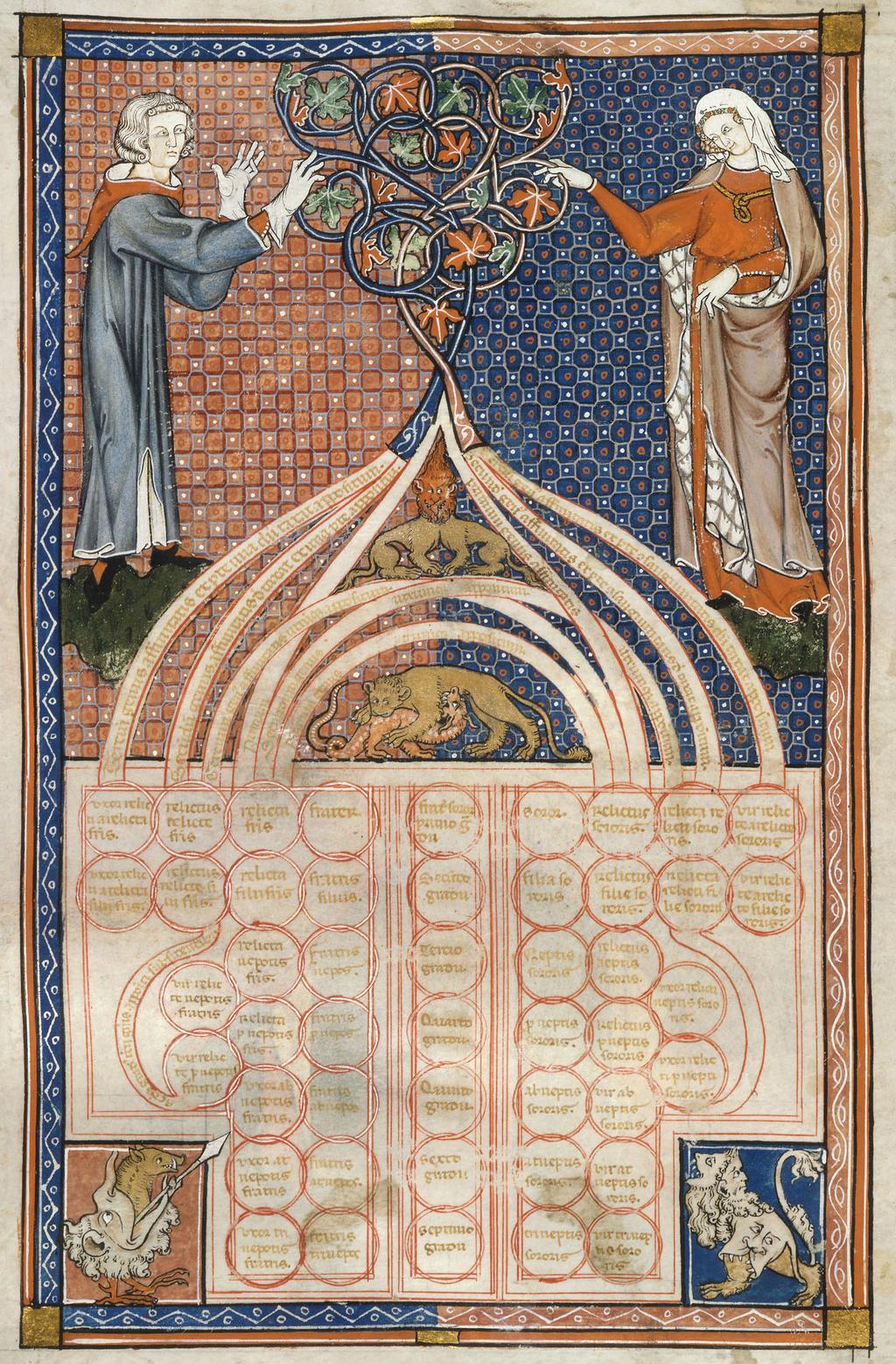
The Tree of Affinity [71v], shows the relationships one has with the family of one’s spouse. It identifies those relatives whom one could not marry if the spouse were to die. At the top, on either side of a stylised tree, stand a young man and woman. She is particularly elegantly dressed, her pink cape lined within miniver – a black-and-white fur, popular with the nobility in the fourteenth century. The bottom corners are filled with two particularly fine grotesques.
Other highlight objects you might like
Other pathways and stories you might like
Sign up to our emails
Be the first to hear about our news, exhibitions, events and more…

